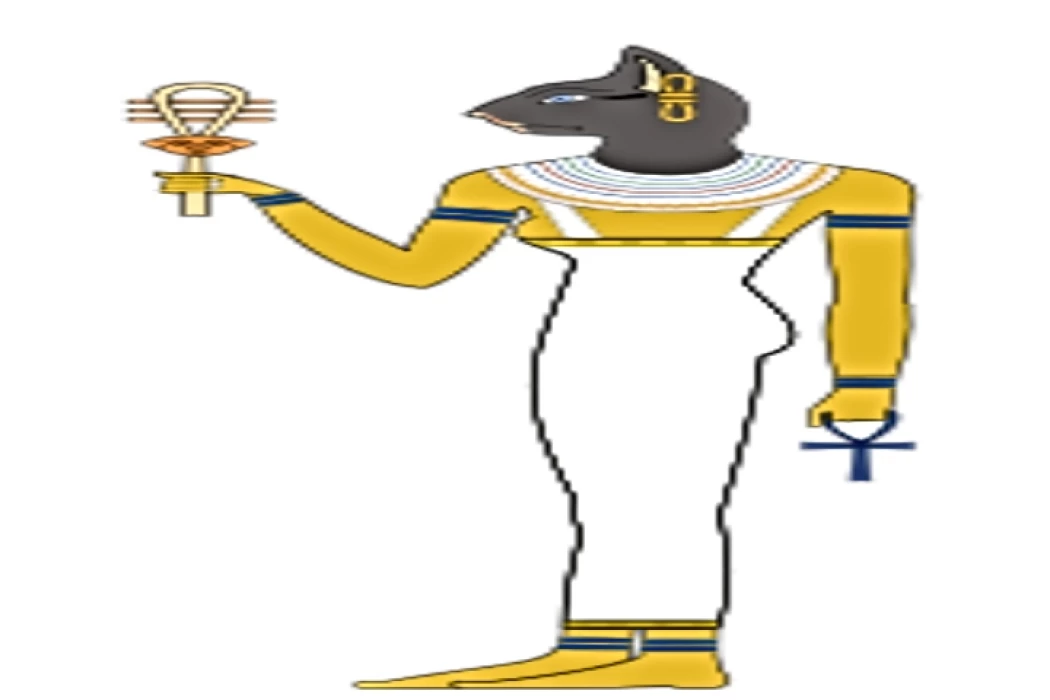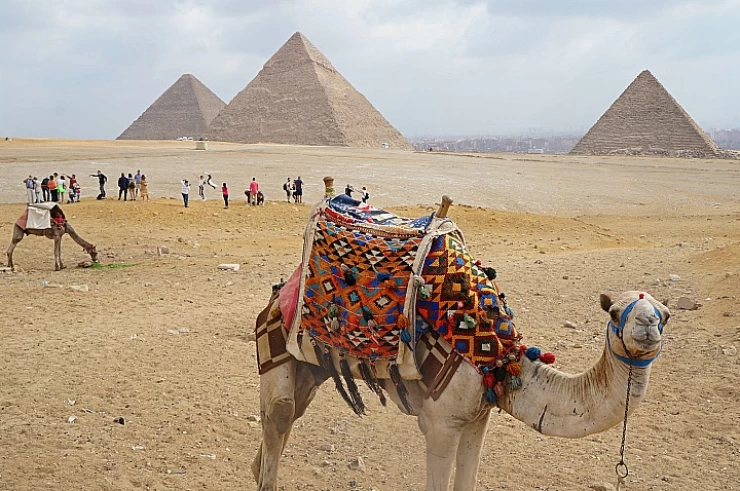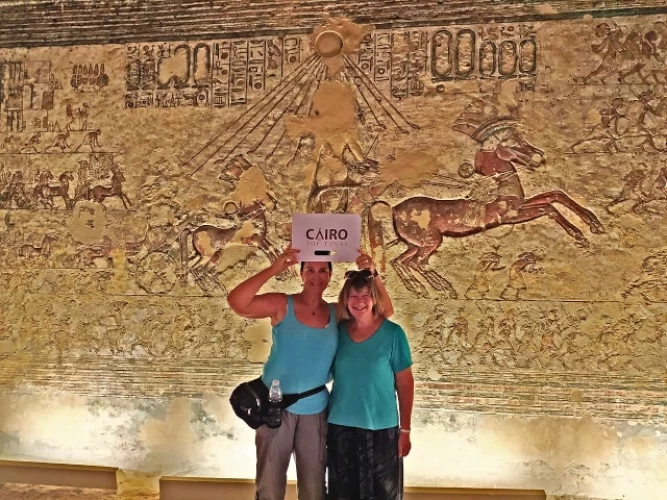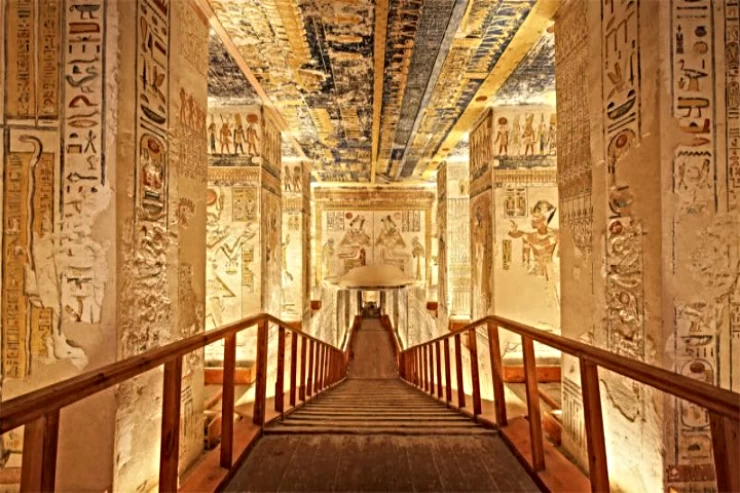
The Egyptian Cat Goddess Bastet
Bastet ( God of ancient Egypt )
Cats were known in ancient Egypt as "Mau", and had an important position in ancient Egyptian society. One of the Egyptian deities that took the form of a cat was Istet, one of the goddesses of the ancient Egyptians, who was embodied in the form of a gentle cat. She was merged with the goddess Sekhmet in the New Kingdom, where Sekhmet was represented in the form of a predatory lioness. The cat symbolizes the goddess Bastet, the daughter of the sun god Ra, who was depicted in drawings as a woman with the head of a cat. Since "Bastet" was closely related to women, she is therefore revered as the goddess of kindness and tenderness.
The ancient Egyptians raised The ancient Egyptians cared for cats in the households and mummified the animals in death the same way they did to the deceased. It was a punishable offense for anyone apart from the priest to kill a cat near a temple.
The oldest Bastet amulets are found in burials from the end of the Old Kingdom. The amulet was worn by women during their lifetime, primarily to place them under the goddess's care and perhaps to give them fertility. Several Egyptologists have suggested that the depiction of the cat may have sexual connotations, given that cats often appear in scenes with women. The animal was even considered a symbol of fertility, as cats were often depicted surrounded by their young, indicating this trait.
According to Herodotus, both men and women from Egypt enjoyed rides on boats which traveled along the Nile to the town of Bubastis. While some women would perform music with the sistrum musical instrument, their male counterparts would be playing the flute and others would be singing and dancing and beating the drums all through the journey. In the beginning of the celebration at Bubastis, there would be extremely extravagant offerings made. The period of this festivity was when the maximum amount of alcohol along with wine was taken as compared to any other time in the year. In addition, he states that ‘the grandeur of the temple devoted to Bastet could be found in the center of the city and was visible from all directions.
The ancient Egyptians were interested in mummifying animals, birds and reptiles that they considered to be the embodiment of some of the ancient Egyptian gods, in order to present them as offerings, including mummified cats that were offered to the goddess "Bastet". In the city of Bubastis, mummified cats were found buried underground, presented by pilgrims from all over Egypt to the goddess "Bastet". A number of amulets were also found there, in addition to bronze statues of the same goddess. In the late dynastic era and the Greek and Roman eras, loyal pilgrims offered thousands of bronze votive statues and tens of millions of mummified cats to appease the goddess in order to answer their prayers.
There is a much difference between the Sekhmt god and the Bastet god they have the same represented form but with a different mission so the lovely Bastet goddess of pity and mercy but Sekhmet is the goddess of war and power.
Bastet according to the ancient Egyptian religion is Atum`s wife and She also worshiped "Bastet" in Upper Egypt, where she was likened to or represented by the goddess "Death", the wife of "Amun" in "Thebes".
The relationship between Bastet and Hathor
The gods also had a relationship with the gods Hathor, each of the gods of fun, and Bastet sometimes represented the delegation of her hand rattling in the form of the head of Hathor, and the worship of the gods Bastet merged with the worship of the deities of Hathor in the era of the Old Kingdom, as the gods depicted Hathor on the walls of the temple of King Bibi I (the family) Sixth),
then Hathor appeared standing next to King Bibi the First, and it seems that this king was interested in worshiping the gods Hathor in the area of Basta, next to her main idol, the gods Bastet, and the gods were depicted on a stone found in the cabin of the aforementioned temple, and it can be considered a metaphor for this. The inscription to the local deities Bastet.
The god Hathor was famous for being Sekhm when she was angry, and she used to be calm and cheerful, and there was a similarity between the feast of the gods Bastet and the feast of the goddess Hathor, which was called:
The Feast of Resurrection. Just as the gods Bastet merged with the gods, Hathor, since the era of the Old Kingdom, as we have already indicated, the gods took the status of the gods to Hathor from the Middle Kingdom era, to merge with the gods Bastet, so the worship of the gods Bastet was linked to the worship of the god's Death in Thebes, so the gods were called Bastet:
the gods are death Bastet, and represented while placing on her head the feathers of the god Shu and two horns between them, the sun disk.
The meaning of Bastet
Her name is derived from the name of the city of Bast (Bubast (Bubastis in Greek)), the center of her cult in the 18th region of Lower Egypt, and it is likely that her sacred animal was not originally the cat but the lioness. She was also called "Lady of Basta" in connection with her place of worship, a title that remained in the texts until the end of ancient Egyptian history.
The goddess Bastet was depicted as a cat-headed woman holding in one hand the shakshikha of Hathor and in the other holding a basket. She is also sometimes depicted as a cat. The goddess Bastet is usually depicted as a seated female lioness, or as a female human figure with a lioness or cat head, and on some Second Dynasty steins she appears as a woman with a lioness head. Bastet has been associated with the cat since the Middle Kingdom.
The gods are death Bastet, and represented while placing on her head the feathers of the god Shu and two horns between them, the sun disk.

















